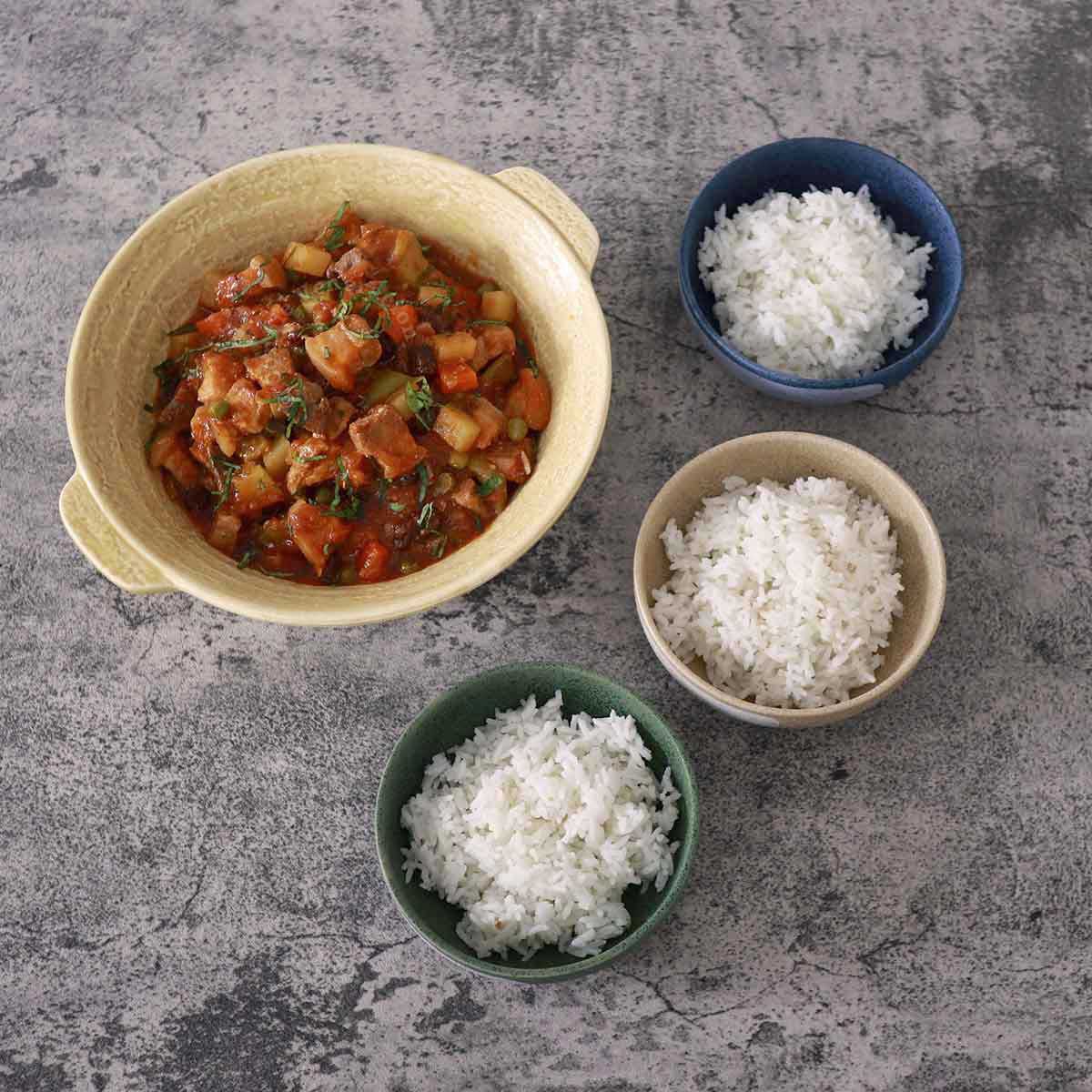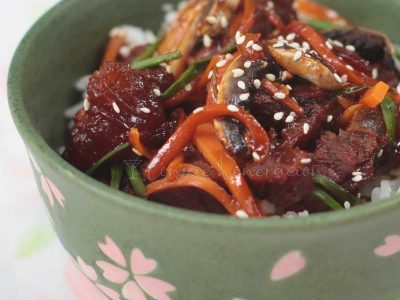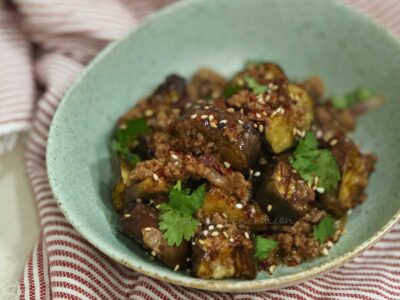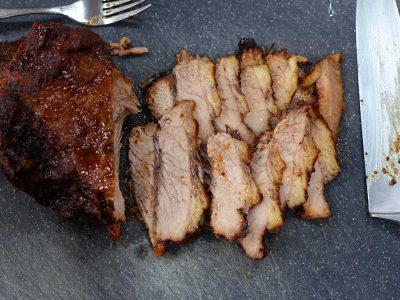It’s comfort food for many Filipinos. It was on our dining table at least twice a month when I was growing up. My husband has a similar experience. Menudo is so well loved that it also makes an appearance at parties and even during Christmas and New Year.
I’ve eaten so many versions of this dish over the years and I know that there’s good menudo and bad menudo. In my vocabulary, soupy menudo is badly cooked menudo. It is a stew, after all. Menudo with more potatoes and carrots than meat is even worse.
But the worst menudo is the kind with sliced hotdogs. That wasn’t how menudo was cooked when I was a child but, by the time I was in high school, menudo with hotdog had somehow become the norm. How that happened, I have no idea. I’m guessing that some mother wanted to make the dish more palatable to her picky children and hotdogs were a big come on.
So, when I was first learning to cook, I’d add hotdog slices to my menudo too. I don’t anymore. I haven’t in years. Hotdogs don’t add anything to the stew in terms of flavor and nutrient. Red hotdogs just ruin the natural color of the sauce. Today, I cook menudo with the same ingredients used by my grandmother and my father. But I’ve modified the cooking procedure.
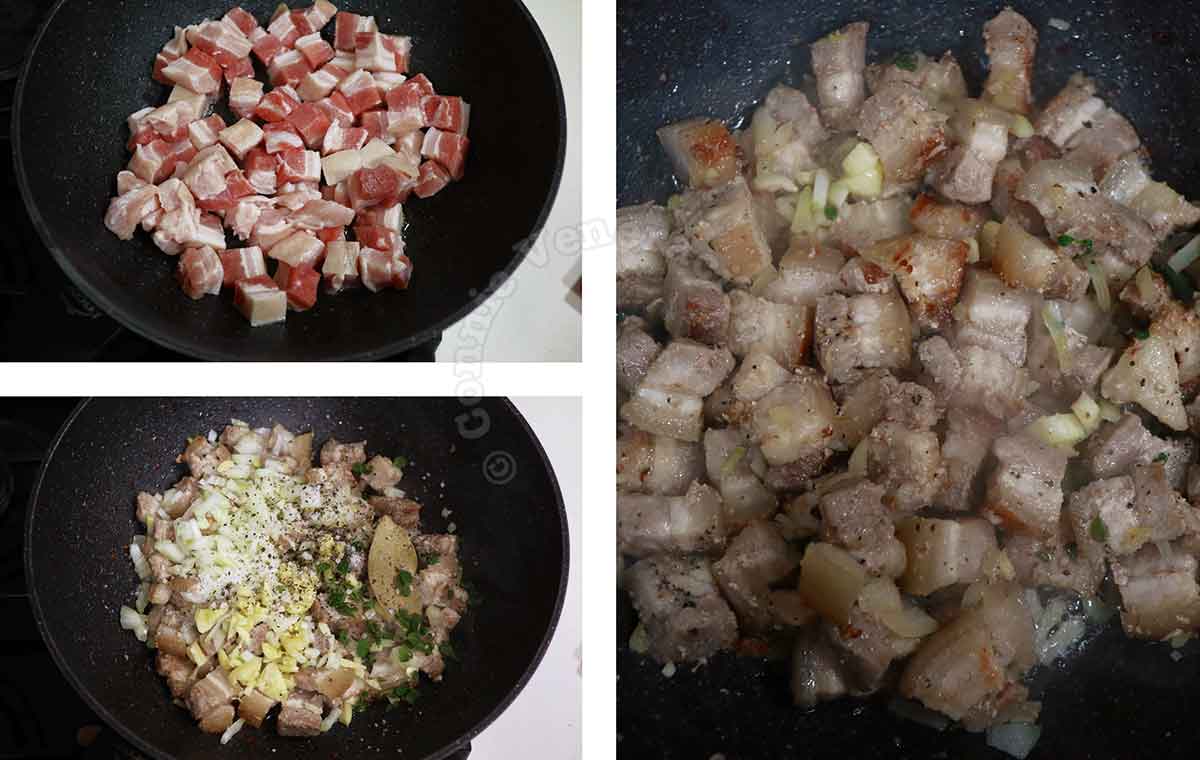
It’s always pork belly. Always. Menudo is terrible unless cooked with a pork cut with a generous amount of fat. And the pork belly has to be browned before anything else. Browning the pork before stewing was not a standard cooking method in my family when I was a child. The procedure back then was to saute onion and garlic before the meat was added to the pan. I do the reverse now. Why? Because I have learned after decades of cooking that Maillard reaction isn’t just a buzz phrase. Browned meat and the rendered fat give stew better flavor.
A pan is lightly coated with oil, the pork cubes are spread out and left until the undersides are just starting to brown. Then, the meat is tossed around, the chopped onion, garlic, oregano and bay leaf are added with salt and pepper. Everything is tossed together for a few minutes until the pork browns some more and the onion bits are just starting to turn translucent.
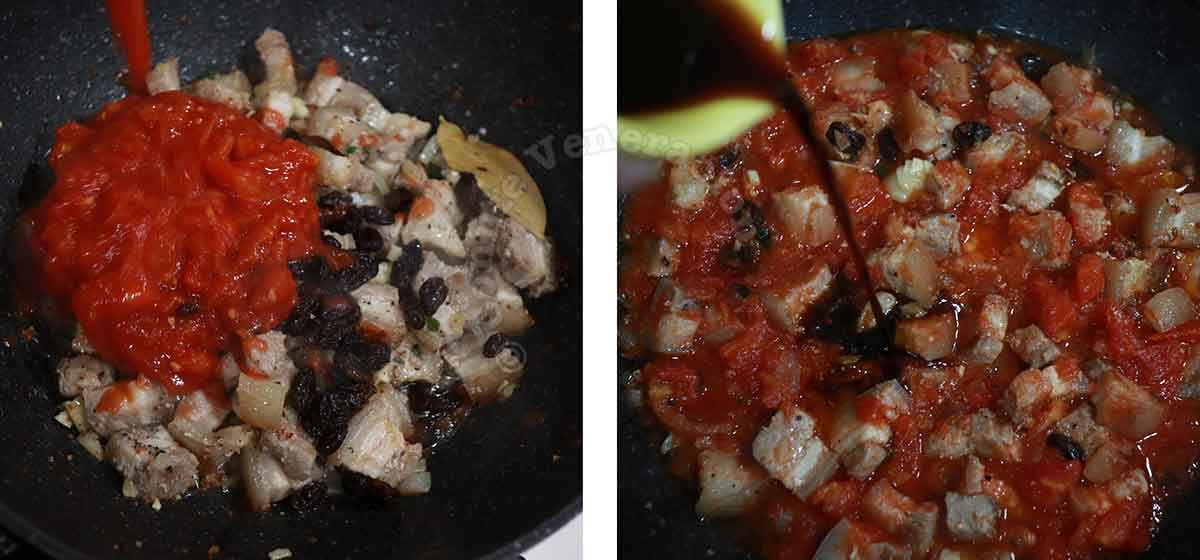
At that stage, the pork is ready to receive the tomato sauce. I prefer diced tomatoes over store bought tomato sauce. The latter just lacks the natural acidity of tomatoes. The pork having benefitted from all the tossing with salt, it is ready too to absorb a bit of sweetness. The raisins go in with the tomato sauce.
And then, the additional seasoning. The standard is soy sauce. Without it, you see, menudo looks anemic. And the flavor is a bit flat too. So, cooks add soy sauce. Just a tablespoon or two. I used to add soy sauce but not anymore. I use liquid seasoning. Knorr liquid seasoning, to be more precise (no, this is not a sponsored post). It makes a world of difference.
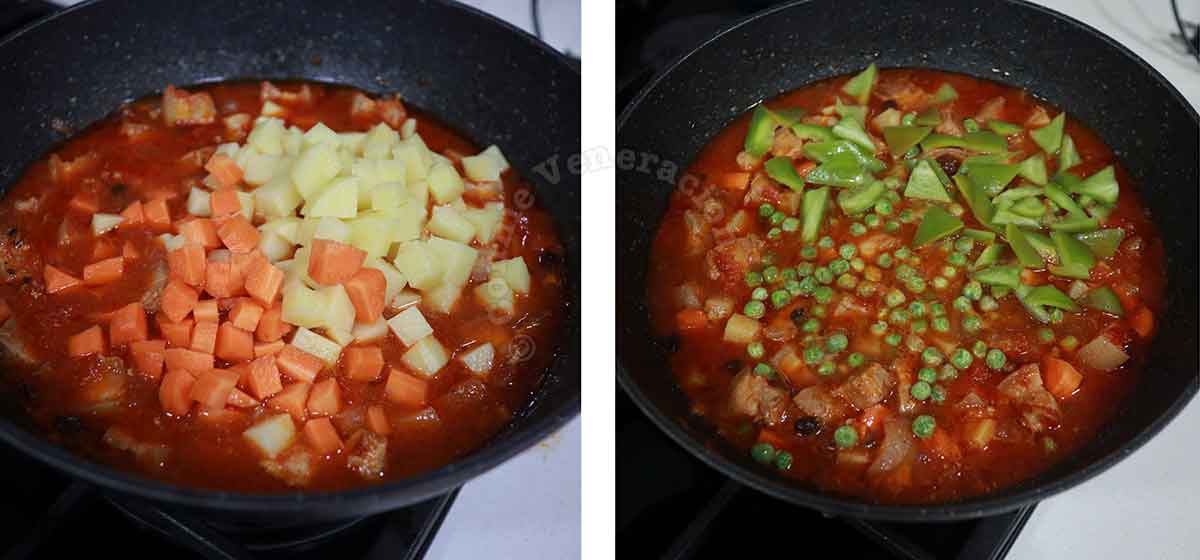
Diced tomatoes liquefy during cooking but the liquid is often not enough to cook the pork to tenderness. Instead of adding water, I add broth. Vegetable broth was used here but chicken broth will work just as well. Beef broth is too strong. Pork broth, I have’t tried. I add no more than half a cup at a time to avoid being left with too much liquid by the end of the cooking time. Like I said earlier, soupy menudo is bad menudo.
Knowing when to add the vegetables is something I perfected after so many years. My father used to fry the potatoes and carrot, and add them towards the end of cooking. They get better texture that way. The problem is that because they simmer in the sauce for such a short time, they are prevented from soaking up the flavors.
I add the potatoes and carrots together because they cook at roughly the same time. Carrot takes a bit longer to cook so I just cut them into slightly smaller cubes. Because they need to cook in the sauce for at least twenty minutes to soak up the flavors sufficiently, I add them before the pork reaches the perfect stage of tenderness. That way, I don’t overcook the meat either. I just let them all simmer together and they get fully cooked at the same time. The bell pepper and peas don’t need as much time to cook as the potatoes and carrots. So, I add them just before the liver goes in.
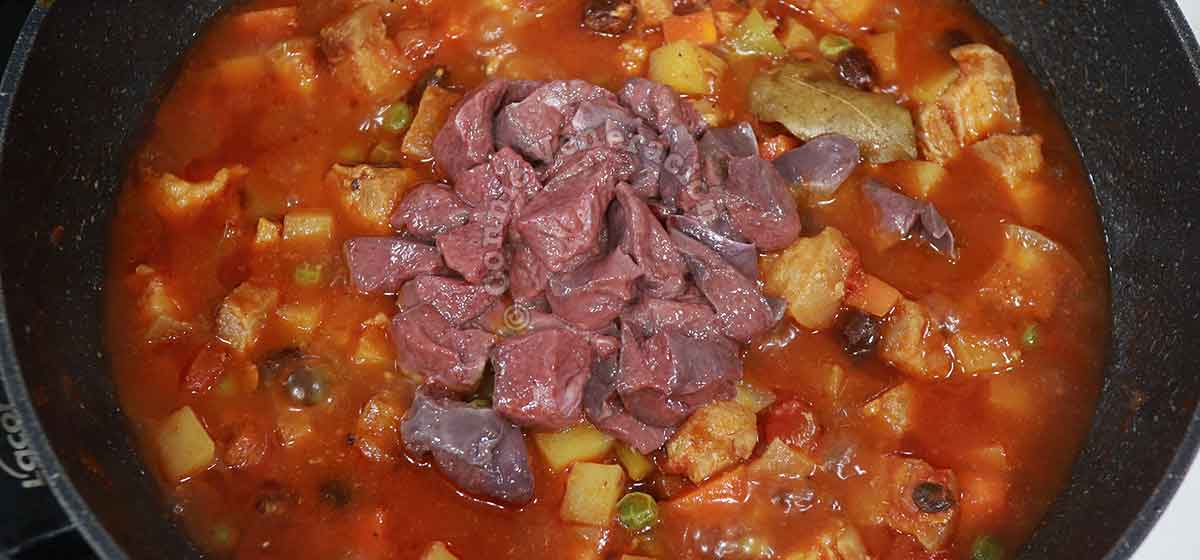
Pork liver. That’s what many cooks omit in favor of hotdogs. People will wolf down slices of hotdog but not pork liver? What has the world come to, really? Liver is packed with flavor and nutrients, and it thickens the sauce beautifully. And liver requires such a short time to cook because it turns tough with a rubber-like texture when overdone. Add the liver last and simmer for no more than five minutes, and be amazed at the transformation that the sauce undergoes.
Pork menudo
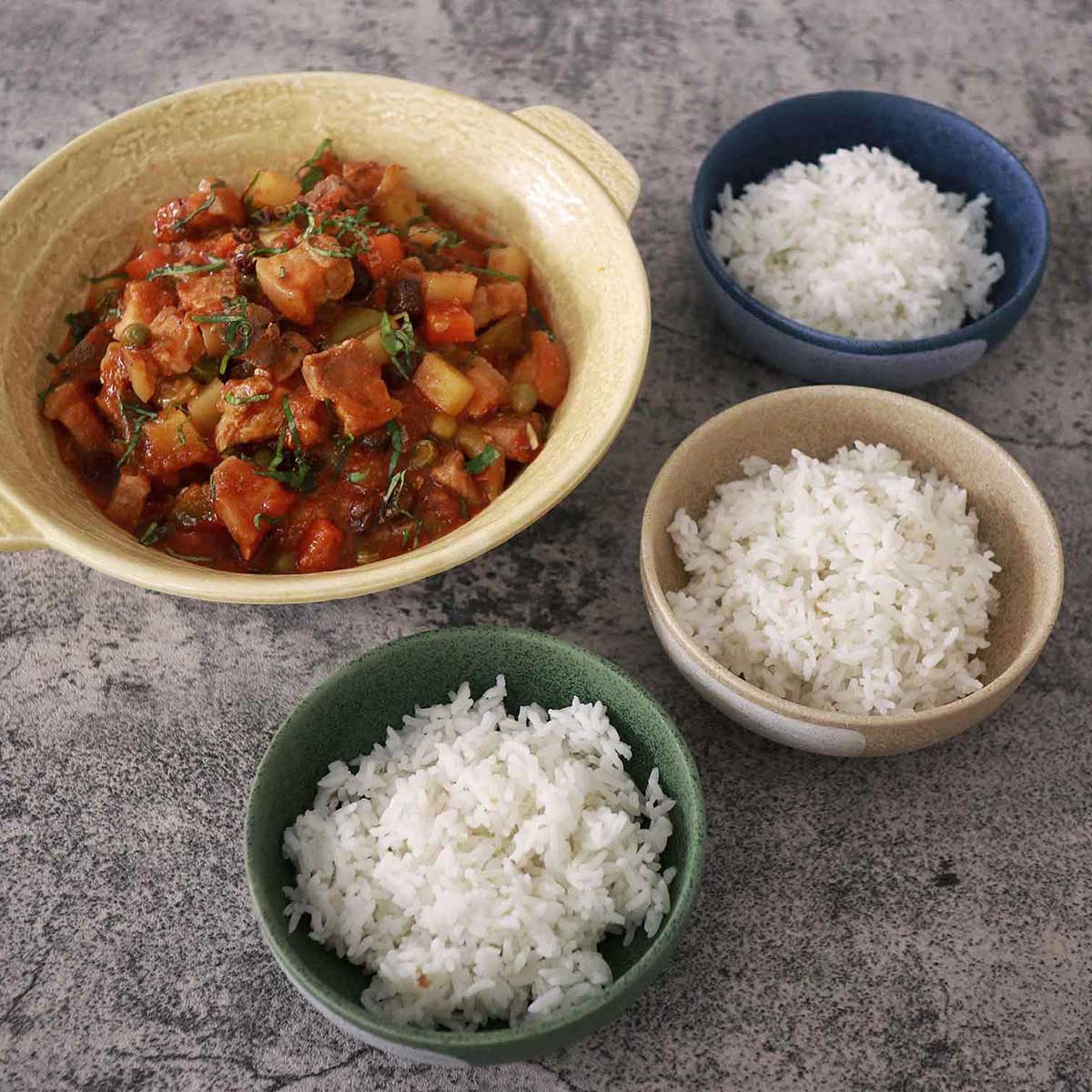
Ingredients
- 2 tablespoons cooking oil
- 600 grams pork belly with at least 30 per cent fat, cut into one-inch cubes
- 1 onion peeled and chopped
- 6 cloves garlic peeled and chopped
- 2 sprigs oregano stripped
- 1 large bay leaf use two if yours are small
- salt
- pepper
- 2 cups diced tomatoes exactly one can
- ¼ cup raisins more if you want a sweeter menudo
- 1 to 2 tablespoons liquid seasoning I use Knorr
- 2 cups broth vegetable or chicken
- 1 large potato peeled and cut into half-inch cubes
- 1 medium carrot peeled and cut into cubes slightly less than half-inch
- 1 bell pepper deseeded and diced
- ¼ cup sweet peas
- 150 grams pork liver cut into half-inch cubes
Instructions
- Coat the bottom of a cooking pan with the oil and heat.
- Spread the pork belly cubes on the hot oil and leave until the undersides are just starting to brown. Toss and cook until no pinkness is visible.
- Add the onion, garlic, oregano and bay leaf.
- Sprinkle in a tablespoon of salt and a quarter teaspoon of pepper.
- Cook, stirring often, until the pork is browned along the edges and the onion pieces appear translucent.
- Pour in the tomatoes and add the raisins. Stir.
- Pour in the liquid seasoning.
- Bring to the boil, cover the pan, lower the heat and simmer for fifteen minutes.
- Check the liquid. If too dry, add a half cup of broth. Taste, add more salt and pepper, if needed, and simmer for another fifteen minnutes.
- Check the liquid again, add another half cup of broth and adjust the seasonings, if necessary.
- When the pork tastes like it will be fork tender in about twenty minutes, stir in the potato and carrot cubes. Pour in half cup of broth. Sprinkle in a little more salt.
- Simmer until the vegetables are tender.
- Stir in the diced bell pepper and peas.
- Add the pork liver, stir, cover the pan and simmer for another five minutes.
- Give your menudo a final taste before serving. Best with rice or bread.

